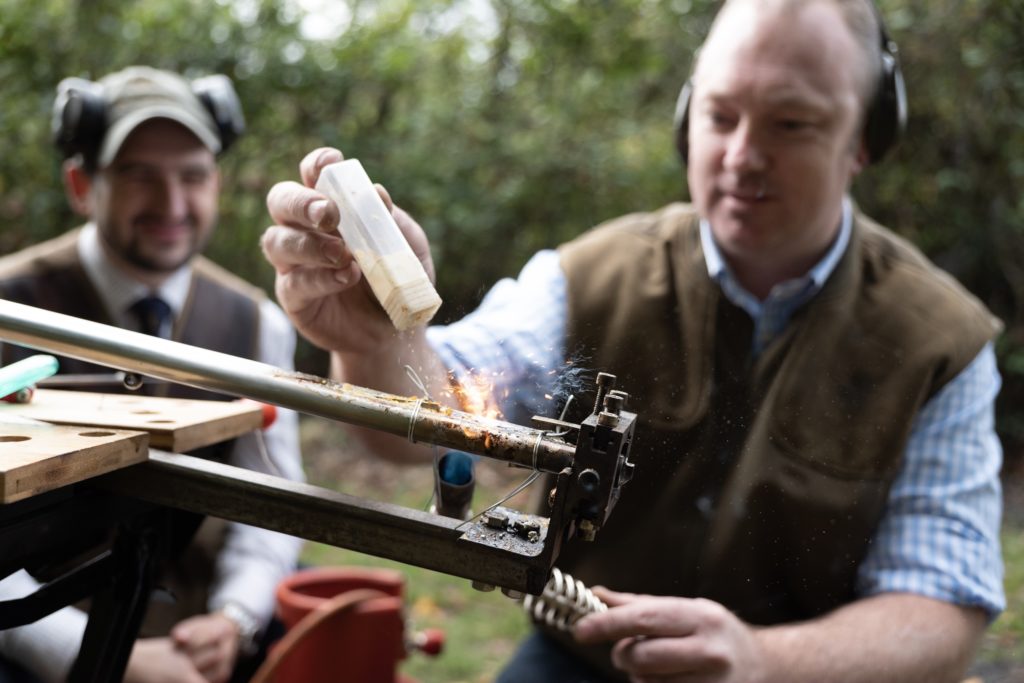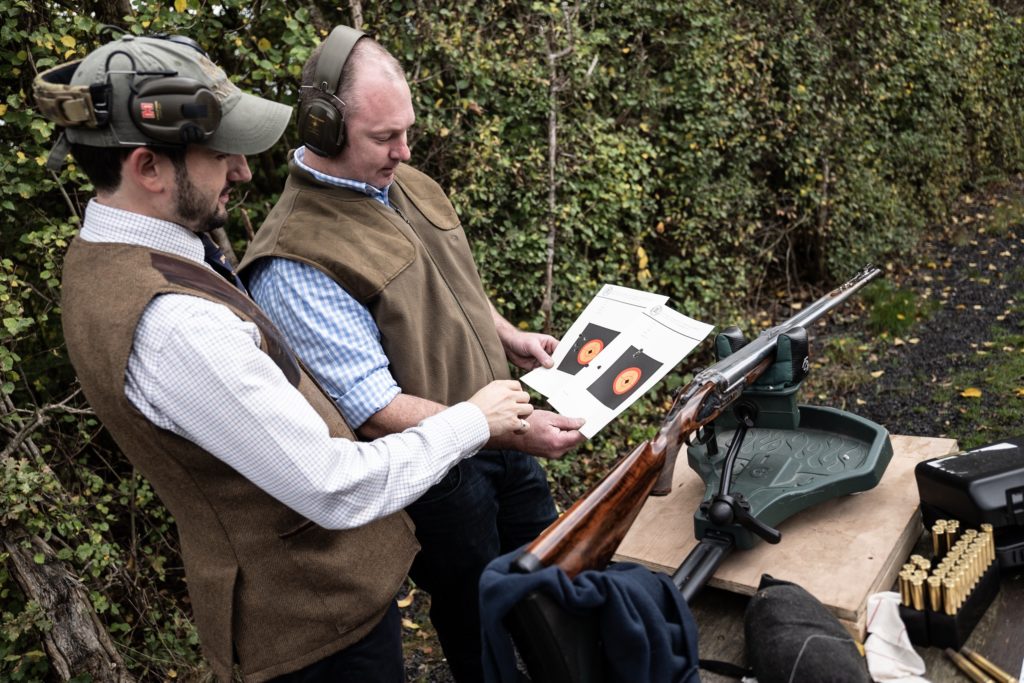Everyone seems to have an opinion about the best means of getting a rifle with one barrel attached to another to place two shots side-by-side within an inch or two of one another and at the desired range. In this blog, Diggory Hadoke gets to grips with the gritty subject of double rifle regulation.
Not many companies still make double rifles, but for John Rigby & Co. their Rising Bite is still in demand. The double rifle has largely been surpassed by bolt-action magazine rifles, which are cheaper to make, accurate, reliable and, above all, easier to make shoot tight groups and simple to adjust. The old double rifles were painstakingly tested and adjusted in order to make them deliver accurately.
I met up with Keith Dennison-Thomas, who carries out all of Rigby’s double rifle regulations. He explained to me some of the procedures and challenges for regulating double rifles accurately.
The tools of the trade
Regulation takes place at the range. The regulator will have with him a collection of essential kit to be employed during the process. The ammunition needs to be from a single batch to minimise variation. The average rifle requires 60 rounds of ammunition to regulate.
The regulating jig is a contraption that fits over the barrels for adjustment. A gas bottle provides the heat, binding wire and aluminium wedges are for support. Measuring tools, pliers, rosin flux, tin wire, a lighter, cleaning brush and a tin complete the essentials.
If a proper bench and vice is available, that is ideal. If not, something like a Black & Decker ‘Workmate’ will do the job. British weather being what it is, a shelter is helpful.
The job is made easier with two people. If one shoots and one spots it saves time. The strain of repeatedly firing a heavy rifle is better spread between two over the course of the day.
The initial four sighter shots are fired at a black dot, providing a datum point for the rest of the work. Thereafter, the A3 size half-moon target is used, with a one-inch grid pattern to make adjustments easier to calculate.
Regulating new rifles
Most new Rigbys will arrive with a consistent point of impact, usually within six to eight inches of each other. To adjust the right barrel, the left is clamped, and the barrels heated with the torch to melt the tin. The wedge is moved and pressure applied to the right barrel in the jig. It moves, cools, then fired again. The process is repeated until the regulator is satisfied.
Acceptable results equate to an inch and a half at 65 yards. The regulation distance is important. A rifle regulated to touch bullets at 50 yards will be crossing at 70 yards. Barrels regulated to shoot within an inch and a half of each other at 65 yards, won’t start to cross until they reach 100 yards.
A number of factors can affect the process. Light, thin rifle barrels on many foreign double rifles react more erratically to each adjustment than the thick, barrels on British rifles. Small calibres are very sensitive and often the act of heating alone will cause the point of impact to change significantly. In general, big, slow bullets are easier to regulate than small fast ones.
Ammunition
Whatever its origins, when a rifle is made, it would have been carefully regulated with the desired ammunition, with a particular weight and grain of black powder. To replicate the performance characteristics of these powders today requires some experimentation.
Many people load their own ammunition, with the help of technically useful books and careful experimentation at the range. This way, some of the once dormant rifles of the past, like the beautiful black powder express hammer rifles of the late 1800s have been brought back into service.
A key issue for double rifle performance is consistency of ammunition. One newly regulated .375 was shooting inch and a half groups and when a new box of ammunition was introduced, the groups moved to six and a half inch groups, which is no use for hunting! It is best to buy a large quantity of same batch ammo when you set up the rifle: enough to last your lifetime of shooting.
Learning to be a regulator
Regulating rifles is not an easy job for the hobbyist to have a go at. The usual problem is that by heating the barrels, they lose all the solder that holds them solid. In such cases, the barrels need to be fully stripped and ribs re-laid. The accumulated debris under the ribs needs properly cleaning out first.
Keith learned how to regulate by helping Paul Willis and David Perkins when they were doing the job for Rigby and Paul Roberts, back in 1994. Keith then spent a decade working for Purdey and a period in self-employment, before taking a foreman’s position at Westley Richards in 2007. Five years ago he returned to a freelance role and continues to work for a number of gun and rifle makers.
We are fortunate to still have a small number of really skilled and experienced professionals, like Keith Dennison-Thomas, who understand, and can perform, these essential services for the bespoke gun building trade. Without them, many of our old and new rifles would never perform to their potential and deliver the service that we hunters need.





Hello
I’m a rifleman from Tsechien republic and I have a question .Sometimes after cold loading the bullet bundle the barrel dispersion shifts can you advise me what is the cause.
I admire your work and thank you for any advice Czuch Pavel Rifleman